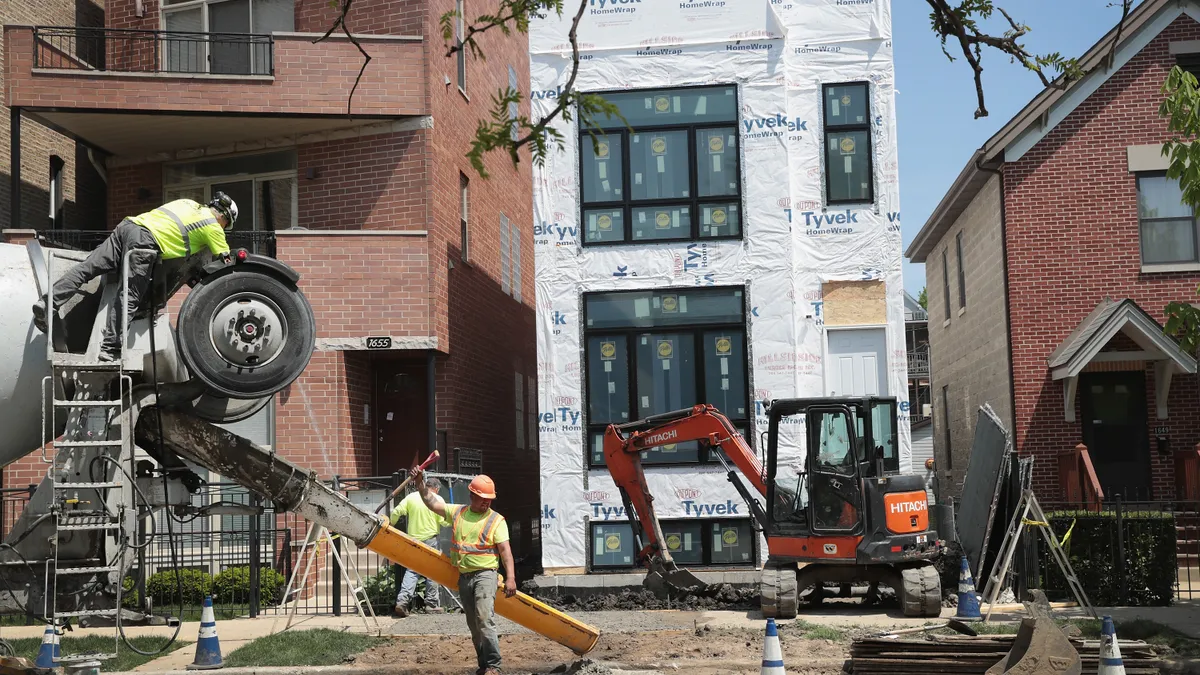Dive Brief:
- A ruling from the Illinois Supreme Court could affect whether construction defects are covered by general liability clauses, not just in the Prairie State, but around the country.
- A homeowners association in Hanover Park, Illinois, sued developer M/I Homes after its subcontractors allegedly performed faulty work, resulting in damage to the homes and adjacent properties. M/I Homes demanded that Acuity, the subcontractor’s general liability insurer, defend them in the litigation, but the company refused.
- The supreme court ruled that Acuity may have had a duty to defend the developer, and that faulty work the subcontractor performed counted as an “accident” in these circumstances. However, the judges also remanded the issue back to the circuit court to determine whether an exception from the liability clause was warranted.
Dive Insight:
When Acuity refused M/I’s demand for a defense, the case went to litigation. Lower courts sided with Acuity, but the ruling from the state’s highest court put the insurer back on the hook to defend the developer. At the same time, it left wiggle room in the case when it called on a lower court to reconsider a possible exemption.
Much of the debate hinged on whether faulty work performed by a subcontractor constituted an “accident” or an “occurrence” that could be covered under the contractor’s general liability clause.
Under the normal readings of Illinois law, the insurer wouldn’t be required to provide coverage of the damages. However, this new ruling provides a crack in that armor, said one attorney.
Adrienne Kitchen, an attorney for Pittsburgh-based Reed Smith in the firm’s Chicago office, said that the ruling could have implications for contractors not just in Illinois, but around the country.
Under the legal concept of “persuasive authority,” — which includes court rulings — Kitchen said contractors can point to the Illinois decision as an example of a like-minded judgment to sway another court’s opinion.
Kitchen noted similar rulings on the books in Texas and Florida could act as backstops for the Illinois decision.
“Depending on what statute of limitations may apply, if something has happened recently, general contractors may want to take a look at their policies and see if this ruling now means that there may be coverage when, under the previous analysis, there may not have been,” Kitchen told Construction Dive.
Big costs
Construction defects are among the top reasons that projects are litigated across the industry. They can also be costly — in 2021, Lyndon Center, Vermont-based J.A. MacDonald paid $637,500 to settle accusations from the Department of Justice that it defectively built four bridges between 2008 and 2010.
Kitchen said that while the court found that initial coverage under the policy applied, exclusions listed in the insurance language may still be active, hence the court’s decision to send the case back down to the circuit’s bench.
However, Kitchen also said that it was hard to predict what would happen next, once the case gets back down to the circuit court — it may even wind back up in front of the supreme court.
“Since the law is premised on the idea that reasonable minds can differ, you can get a lot of options for the end result,” Kitchen said.















